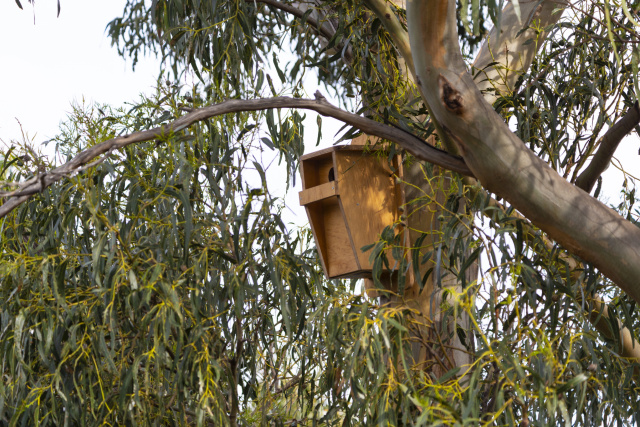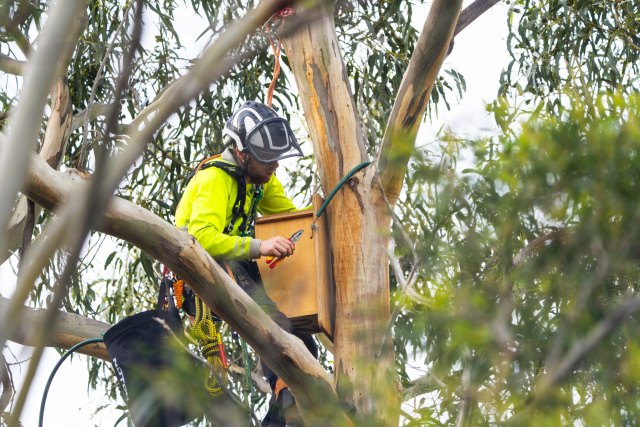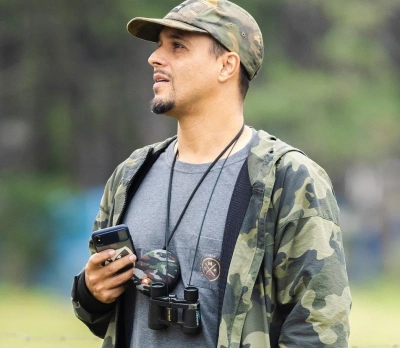Installing bird nesting boxes on Hobart's eastern shore
Tranmere-Clarence Plains Land and Coastcare group member Ross Mackenzie says the three-year project involves placing nesting boxes in remaining big trees, to provide more nesting options for the birds.
"The sort of birds we're looking at are eastern rosellas, green rosellas and pink galahs," he says. "But we've also found that other species have used the boxes, such as ringtail possums, and we've also had bees come into some of the boxes as well."

Ross says it's great to see the boxes being used. He says the pink galahs have their own unique way of moving in.
"They've actually chipped away at the hole, and they've extended it in some places down," he said. "Apparently the pink galah chicks like a little bit of an easier route out of the box."
The nesting boxes are constructed using plywood at the Howrah Men's Shed, and installed in the trees by Tasmanian Tree Care.

Tranmere-Clarence Plains Land and Coastcare group member Ross Mackenzie says the three-year project involves placing nesting boxes in remaining big trees, to provide more nesting options for the birds.
"The sort of birds we're looking at are eastern rosellas, green rosellas and pink galahs," he says. "But we've also found that other species have used the boxes, such as ringtail possums, and we've also had bees come into some of the boxes as well."

Ross says it's great to see the boxes being used. He says the pink galahs have their own unique way of moving in.
"They've actually chipped away at the hole, and they've extended it in some places down," he said. "Apparently the pink galah chicks like a little bit of an easier route out of the box."
The nesting boxes are constructed using plywood at the Howrah Men's Shed, and installed in the trees by Tasmanian Tree Care.

You might like...

Bruny Island nesting box project

Bruny Island launch: James Bunker on the Bruny Island Environment Network

Watch: behind the scenes at the Bruny Island Bird Festival

Bruny Island launch: CEO Phill Pullinger on the Kuno concept
Newsletter
Sign up to keep in touch with articles, updates, events or news from Kuno, your platform for nature

